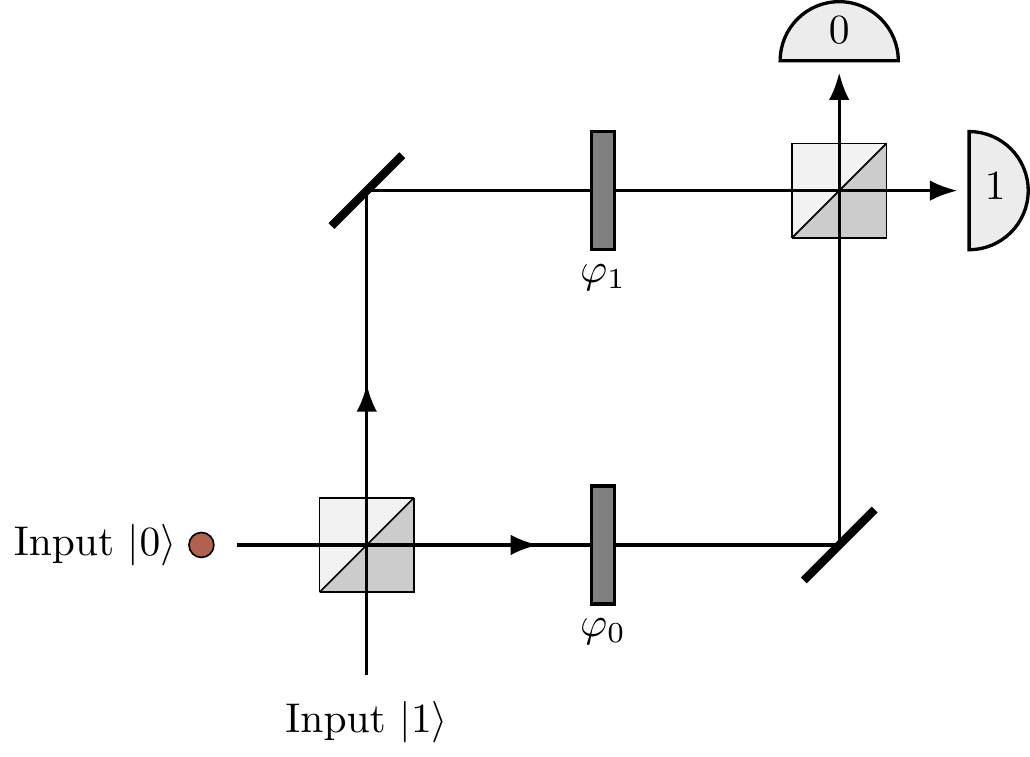3.2 Beam-splitters: quantum interference, revisited
One of the simplest quantum devices in which quantum interference can be controlled is a Mach–Zehnder interferometer — see Figure 3.5.67

Figure 3.5: The Mach–Zehnder interferometer, with the input photon represented by the coloured dot. This experimental set-up is named after the physicists Ludwig Mach and Ludwig Zehnder, who proposed it back in 1890s.
This is a slightly modified version of the construction shown in Figure 3.2, where we have added two slivers of glass of different thickness into each of the optical paths connecting the two beam-splitters.
The slivers are usually referred to as “phase shifters”, and their thicknesses
A photon (the coloured dot in the figure) impinges on the first beam-splitter from one of the two input ports (here input
In quantum theory we almost always work with probability amplitudes, and only once we have a full expression for the amplitude of a given outcome do we square its absolute value to get the corresponding probability.
For example, let us calculate
The “classical” part of this expression,

If we do not care about the experimental details, we can represent the action of the Mach–Zehnder interferometer in terms of a diagram, as in Figure 3.6.

Figure 3.6: The Mach–Zehnder interferometer represented as an abstract diagram.
Here we can follow, from left to right, the multiple different paths that a photon can take in between specific input and output ports.
The amplitude along any given path is just the product of the amplitudes pertaining to the path segments (Rule 1, Section 1.1), while the overall amplitude is the sum of the amplitudes for the many different paths (Rule 2, Section 1.1). You can, for example, see that the probability amplitude
The most popular instance of a Mach–Zehnder interferometer involves only symmetric beam-splitters (i.e.
You can play around with a virtual Mach–Zehnder interferometer at Quantum Flytrap’s Virtual Lab. (There are also lots of other things you can do in this virtual lab — go have a look!).↩︎
We will often use
i as an index even though it is also used for the imaginary unit. Hopefully, no confusion will arise for it should be clear from the context which one is which.↩︎Any isolated quantum device can fully be described by the matrix of probability amplitudes
U_{ij} that inputj generates outputi .↩︎Really, when you write down the matrices describing the action of the symmetric beam-splitters and the phase gates, and then multiply them all together (which is an exercise worth doing!), you actually obtain
ie^{i\frac{\varphi_0+\varphi_1}{2}}U rather thanU , but as we have already said, we can ignore global phase factors.↩︎